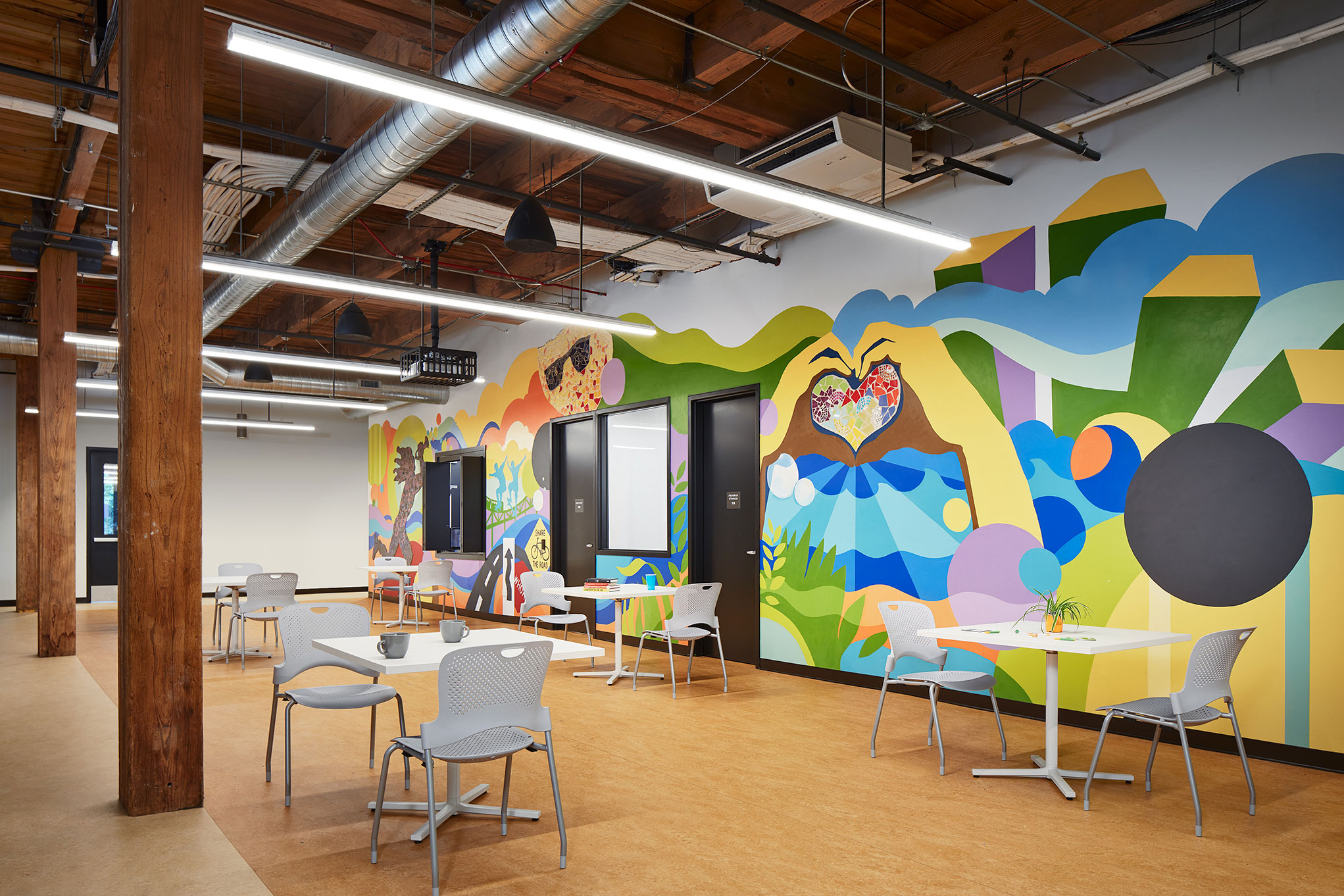Story at a glance:
- Sustainable development is development that satisfies the needs of present generations without compromising the needs of future generations.
- The United Nations’ 17 Sustainable Development Goals offer a comprehensive guide to building a better, more resilient future.
- Sustainable development can be achieved in part by using building performance and modeling software and following green building certification programs.
As the climate crisis continues to wreak havoc on cities around the world, it’s clear that all communities must commit themselves to the notion of sustainable development.
But the concept of “sustainable development” means many different things to many different people. In an effort to consolidate the idea into a more cohesive, guiding framework, we’ve put together this guide to sustainable development—complete with examples and tips on how to achieve it in your own projects.
What is Sustainable Development?
As an overarching concept sustainable development can be defined as a holistic, equitable, and environmentally conscious approach to sociopolitical and economic development, one that prioritizes the rights and well-being of human and non-human life—both present and future—in that it seeks to do “less harm” compared to traditional development practices.
In simpler terms sustainable development may be thought of as development capable of meeting our present needs without compromising the ability of future generations to meet their development needs. Overall sustainable development encompasses a range of fields within the architectural and engineering sectors, including sustainable construction, sustainable architecture, climate responsive architecture, and more.
The History and Evolution of Sustainable Development
While it’s difficult to pinpoint exactly when the concept of sustainable development originated, sustainable development in our contemporary world is thought to have first been discussed at the 1972 UN Conference on the Human Environment in Stockholm.
It was not until 1980 that the term “sustainable development” was coined by the International Union for the Conservation of Nature.
In 1992 sustainable development would be more staunchly defined by Agenda 21 at the UN Earth Summit in Rio de Janeiro, during which 178 countries adopted the plan, pledging to build an international partnership dedicated to human and environmentally friendly development practices.
After the Turn of the Century
At the UN Millennium Summit in 2000 all member states unanimously adopted the Millennium Declaration, which outlined eight Millennium Development Goals (MDGs) with the aim of reducing extreme poverty by 2015.
During the 2012 UN Conference on Sustainable Development in Rio de Janeiro, member states would adopt “The Future We Want,” a document that launched the process of developing a set of sustainable development goals to build off of the existing MDGs.
In 2016 the United Nations officially launched its 2030 Agenda for Sustainable Development, at which point the organization’s 17 Sustainable Development Goals (SDGs)—which we’ll discuss more later—went into effect. It is the intent of the UN and its members to meet all 17 goals by the year 2030.
Over the last seven years the UN High-Level Political Forum on Sustainable Development has convened annually to discuss and review the SDGs, while the UN Division for Sustainable Development Goals serves as the central hub for support and capacity-building relating to the SDGs.
The United Nations’ Sustainable Development Goals
Introduced at the September 2015 UN Summit, the United Nations Sustainable Development Goals of the 2030 Agenda for Sustainable Development officially went into effect on January 1, 2016 and include the following:
1. No Poverty

The Hans Rosling Center is a new hub where scientists, researchers, and faculty work together to address some of the world’s most significant challenges—like poverty, equity, health care access, climate change, and government policy. Photo by Kevin Scott
As one of the original MDGs, the eradication of poverty in all its forms, in all places, is perhaps the most important goal on this list. It is defined by these primary sub-goals:
- Eradicating extreme poverty (defined as living on less than $1.25 per day) everywhere for all people by 2030.
- Ensuring that all people have equal rights to economic resources and access to basic services, ownership of land/other property, natural resources, etc.
- Building the resilience of poor people in vulnerable situations and reducing their exposure to climate related disasters, along with any other social, economic, or environmental upheaval.
In order to address the historic economic limitations of those countries subjected to colonial rule or intensive resource extraction from a colonial or non-governing power, the United Nations recognizes that a large mobilization of resources is necessary to provide least-developed and developing countries with the tools and programs required to reduce poverty within their borders.
The Hans Rosling Center in Seattle is a hub where scientists, researchers, and faculty work together to address some of the world’s most significant challenges—like poverty, equity, health care access, climate change, and government policy.
2. Zero Hunger
In the same vein, the United Nations aims to end hunger by achieving worldwide food insecurity, improving overall nutrition, and promoting sustainable agricultural, horticultural, and permaculture practices. Specific sub-goals include:
- Eradicating hunger by the year 2030; ensure that all peoples, especially those in vulnerable situations, have access to safe, nutritious, and sufficient food year round.
- Ending all forms of malnutrition by the year 2030; address and achieve agreed upon targets for reducing wasting and stunted growth in children under the age of five. Meet the nutrition needs of vulnerable populations (e.g. older persons, pregnant women, adolescent girls, etc.)
- Doubling the agricultural productivity and income of small-scale food producers, particularly those belonging to marginalized identity groups; foster sustainable, climate-resilient food production pathways that fulfill the needs of local peoples without detrimentally affecting the surrounding ecosystem.
3. Good Health and Well-Being
Sustainable development goal number three deals with the promotion of well-being and ensuring healthy lives for people of all ages, particularly mothers, children, and older persons. Specific target areas to be achieved by the year 2030 include:
- Reduce global maternal mortality rate to fewer than 70 per 100,000 live births.
- Reduce the neonatal mortality rate of all countries to less than 12 per 1,000 live births and the under-5 mortality rate to at least 25 per 1,000 live births.
- Strengthen prevention and treatment measures for the misuse of alcohol, narcotics, and other addictive substances.
- Reduce the premature mortality rate of non-communicable diseases by one-third.
- Ensure all persons have access to adequate sexual and reproductive health-care services.
This SDG also aims to end AIDS, malaria, tuberculosis, and other tropical diseases as well as take increased measures to address water-borne diseases, hepatitis, and other communicable diseases.
4. Quality Education
Next up, the “Quality Education” SDG is intended to ensure all peoples—regardless of race, sex, gender, ethnicity, sexual orientation, age, ability, etc.—are provided with inclusive and equitable education opportunities, as well as additional opportunities for lifelong learning. This includes everything from early childhood development, pre-primary education, and K-12 schooling, as well as quality (and affordable) vocational, technical, and tertiary education opportunities.
Other target areas include:
- Increasing the overall numeracy and literacy rate among young persons and adults.
- Virtually eliminating all gender disparities in education while also ensuring equal access to all levels of primary and secondary schooling for those persons of vulnerable or marginalized identities.
- Upgrading existing educational facilities and build new facilities that are disability and gender sensitive.
5. Gender Equality
Due to the historic marginalization, discrimination, and mistreatment of women and girls, the United Nations dedicates a specific SDG to fostering global gender equality, citing the following as target goals:
- End all forms of gender-based discrimination and eliminate all forms of violence against women and girls in both the public and private spheres.
- Completely eliminate child, early, and forced marriage, female genital mutilation, and other harmful practices.
Ensure women are provided with equal opportunities for leadership in business, politics, and other aspects of public life. - Promote women’s empowerment through improving access to information and communications technology as well as by adopting sound policies and legislation.
Other areas for improvement include strengthening reforms that give women equal rights to economic resources, financial services, property and land, inheritances, etc.
6. Clean Water and Sanitation
As one of the most precious resources on the planet and the most crucial to sustaining life, clean water is, by all accounts, an absolute necessity, but one many do not have reliable access to. This particular SDG seeks to change that by promoting sustainable water management and ensuring clean water as well as sanitation in general is available to all.
Some of the most notable sub-goals include:
- Drastically reducing pollution and minimize/eliminate the dumping and release of hazardous materials and chemicals into waterways; increase the proportion of treated wastewater by at least half.
- Implementing wide-scale integrated water resource management by 2030; expand international cooperation and support for developing countries when it comes to the implementation of water-and-sanitation-related programs and activities.
- Increasing water-use efficiency across the board, in all sectors, to reduce the amount of persons suffering from water scarcity.
7. Affordable and Clean Energy
As our first energy-related goal, SDG #7 focuses on providing all peoples with equitable access to reliable, sustainable, and affordable energy solutions. By the year 2030 this goal aims to significantly increase the share of renewable energy, double the global rate of energy efficiency, and expand sustainable energy infrastructure/technology in developing nations.
In general this goal seeks to improve international cooperation as it relates to the accessibility and sharing of clean energy research and technology, while also promoting investment in clean energy infrastructure/technology across the board.
8. Decent Work and Economic Growth
Tying into the first SDG this goal aims to alleviate poverty by promoting sustainable and inclusive economic growth while ensuring all peoples have decent work and productive employment opportunities.
Sub-goals for this area include:
- Sustaining at least a 7% gross domestic product per annum in the world’s least-developed nations.
- Promoting development-minded policies designed to support the creation of decent jobs, innovation and creativity, entrepreneurship, and other productive activities.
- Encouraging the growth of micro-, small-, and medium-sized businesses.
- Achieving full, productive, and decent employment for all adults, young people, and persons with disabilities, ensuring equal pay for work of equal value.
- Increasing efforts to eradicate all forms of forced labor, child labor, human trafficking, and slavery.
The United Nations also recognizes the need for increased protection of laborer rights—especially those working in precarious employment—and the development of safe working environments.
9. Industry, Innovation, and Infrastructure
Of course, for there to be decent work and economic growth, there needs to be sustainable industrialization that fosters innovation across all sectors—something the UN hopes to achieve by:
- Increasing the ability of small-scale industrial enterprises, particularly those in developing countries, to access financial services and integrate with global markets.
- Developing sustainable infrastructure that supports both human well-being and economic growth, especially in developing, landlocked, or island countries.
- Upgrading and/or retrofitting existing infrastructure to be more sustainable and resource-efficient.
Encouraging scientific research and technological innovation within the industrial sectors of all nations.
10. Reduced Inequalities
Perhaps even more broad than some of the other goals, this particular SDG is concerned with reducing the overall inequality within and among countries, especially as it relates to inequalities linked to race, sex, gender, age, disability, ethnicity, religion, or economic status.
This is to be achieved, at least in part, by:
- Sustaining income growth of the bottom 40% of the population at a higher rate than the national average.
- Eliminating discriminatory policies, laws, and practices and instituting appropriate legislation in their stead.
- Ensuring that developing countries have a voice and increased representation in global economic and financial decision-making.
- Adopting greater social protection, fiscal, and wage policies.
- Facilitating safe and responsible migration/movement of people across borders through the development and enforcement of ethical migration policies.
This goal also encourages greater development assistance and funding for African countries, small island states, landlocked countries, and least-developed countries.
11. Sustainable Cities and Communities
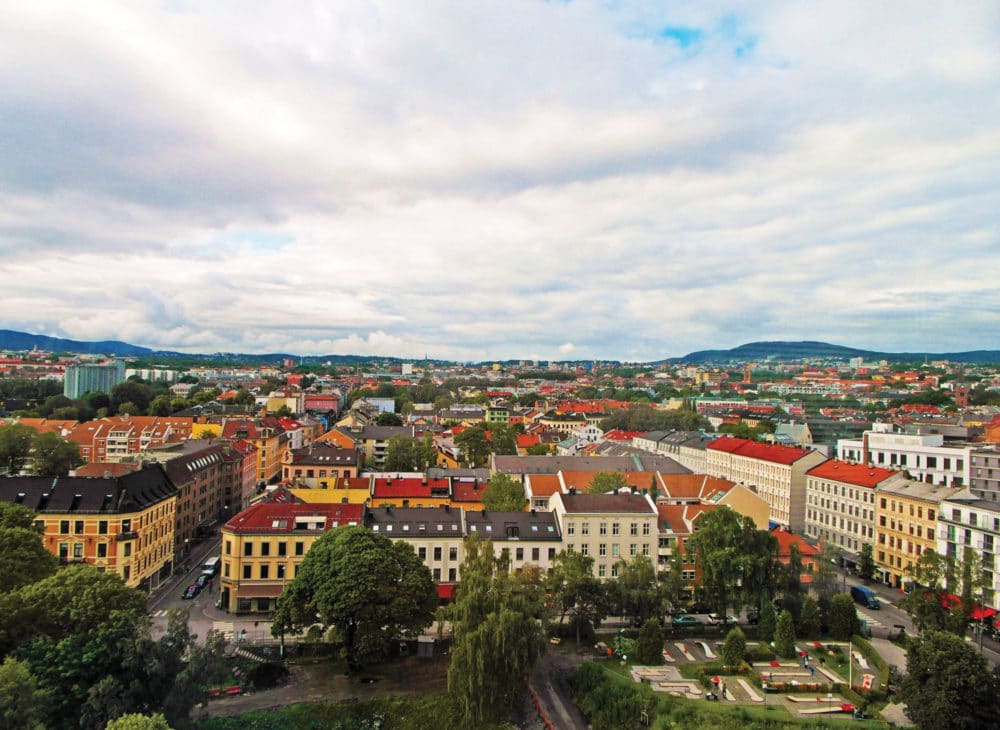
Oslo is considered to be one of the most sustainable cities in the world. Photo by Tord Baklund for #VISITOSLO
As the most immediately relevant SDG for architects, engineers, and planners, this goal is focused on making cities and other human settlements as safe, inclusive, sustainable, and resilient as possible. Sub-goals in this area include:
- Providing safe, sustainable, affordable, and accessible transport networks for all peoples, particularly the elderly, children, and those with disabilities.
- Ensuring that all peoples have access to safe, affordable housing and basic services.
- Strengthening efforts to safeguard natural and cultural heritage.
- Increasing capacity for sustainable urbanization, settlement planning, and settlement management in all countries.
- Reducing the detrimental per capita environmental impact of the world’s cities, especially as it relates to air pollution and waste management.
- Providing all persons with access to inclusive, safe, and accessible green spaces.
Due to the increasing number of climate disasters, this goal also recognizes the need for cities to adopt policies and practices that help mitigate the worst effects of anthropogenic climate change and improve disaster resilience.
12. Responsible Consumption and Production
On average 2.01 billion tons of municipal solid waste is generated each year, while approximately 80 to 90 billion tons of natural resources are extracted annually, according to data gathered by the World Bank. It is the intention of this goal to drastically reduce those numbers by:
- Implementing the 10-Year Framework of Programmes on Sustainable Consumption and Production Patterns.
- Encouraging companies to adopt sustainable procurement and manufacturing processes, as well as publish sustainability information reports on their products and operations.
- Halving per capita global food waste at both the consumer and retail levels.
- Increasing global rates of recycling, reuse, and preventative measures designed to reduce waste production at the source.
13. Climate Action
As one might expect, this particular goal focuses on taking action to combat anthropogenic climate change and its effects. It urges member states, governments, urban planners, and the like to work on strengthening communities’ resilience and adaptability as it relates to natural and climate-related disasters.
Goal 13 also encourages the adoption and integration of climate change measures into national policies and development plans, as well as improving education and awareness surrounding climate change mitigation and impact reduction measures.
14. Life Below Water
Building off of SDG #6, this goal seeks to ensure water isn’t preserved just for human usage, but also for the health and well-being of all species who live below the water’s surface. This goal sets the following targets, among others:
- Significantly reduce and prevent the amount of marine pollution, particularly that which stems from land-based activities, by the year 2025.
- Take steps to address and reduce the impacts and causes of ocean acidification.
- Enhance ocean conservation efforts and the sustainable use of marine resources by implementing those policies laid out by the UN Convention on the Law of the Sea.
- Increase scientific research and technology focused on restoring ocean health and biodiversity.
15. Life on Land
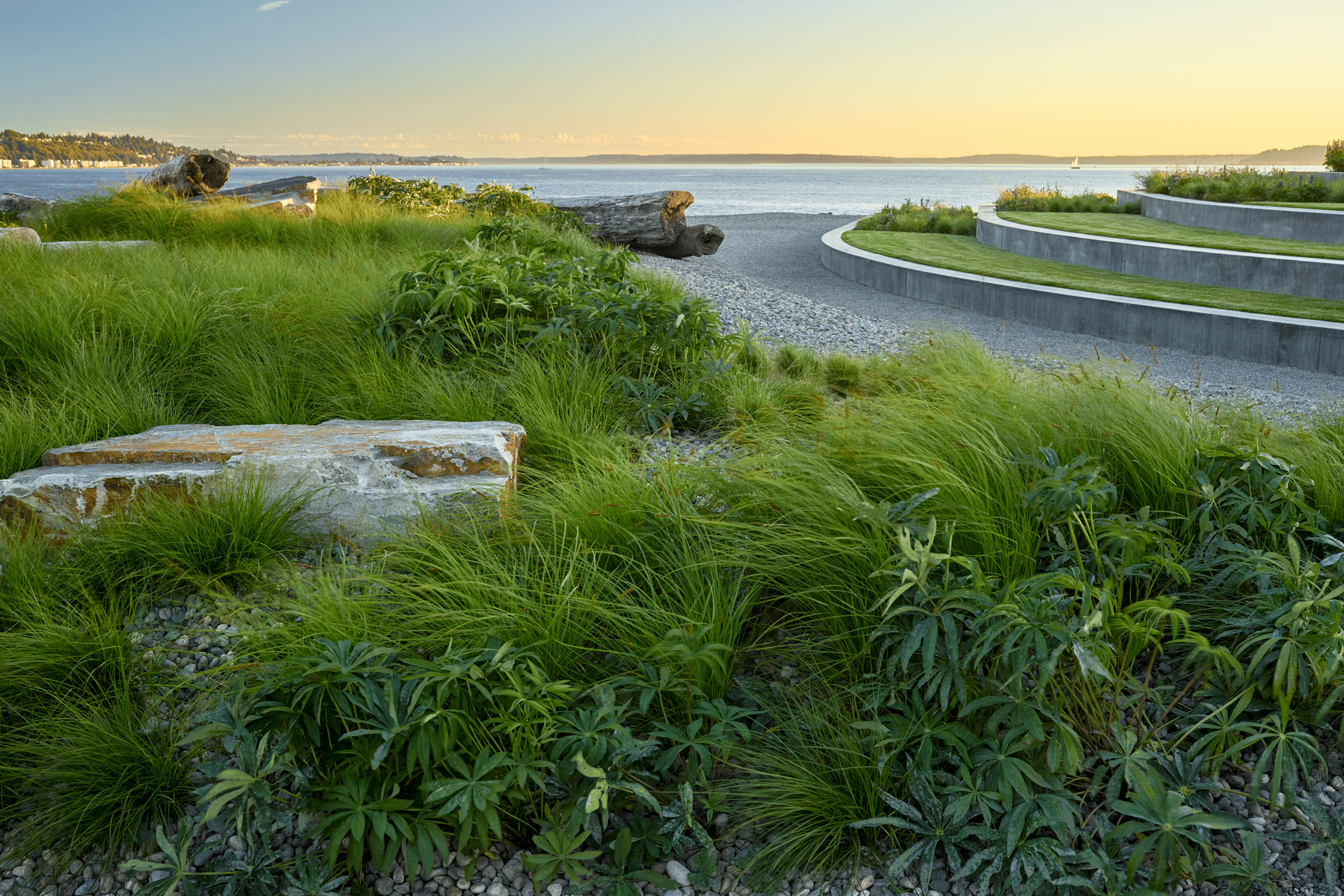
The Surfacedesign project’s planting approach was to use native plants of Puget Sound, as well as plants that increase wildlife. Photo by Marion Brenner
Similarly, this goal seeks to restore and protect terrestrial ecosystems and their biodiversity, as well as promote sustainable use of natural resources and ethical forest management. Take, for example, Surfacedesign’s Seattle project that celebrates the landscape. “The Beach invites users to pause at the edge of Elliott Bay. Celebrating the land-water threshold, reclaimed materials and vibrant native plantings highlight the sculpted topography of the dunes,” Michal Kapitulnikis, partner of Surfacedesign, previously told gb&d.
Other sub-goals of this UN SDG include:
- Increasing efforts to combat desertification and reversing land/soil degradation in areas affected by flooding, drought, and other disasters.
- Ensuring that vulnerable mountain ecosystems are conserved to preserve biodiversity and future contributions to sustainable development.
- Taking action to eliminate the illegal poaching and trafficking of flora and fauna; introduce measures to reduce the detrimental impact of invasive species.
- Incorporating ecosystem-preservation values into planning, development processes, and institutions at the national and local level.
16. Peace, Justice, and Strong Institutions
As one of the more ambitious SDGs, this goal aims to promote the development of peaceful societies that uphold justice by:
- Drastically reducing all forms of violence and violence-related deaths.
- Ending the exploitation, abuse, torture, trafficking, and violence towards children.
- Significantly reducing corruption, bribery, and the flow of illicit arms and finances, as well as combat all forms of organized crime.
- Building effective, transparent, and accountable institutions while also ensuring that all decision-making is inclusive and representative.
17. Partnerships for the Goals
Finally, this last goal is meant to strengthen the means of implementing and realizing all of the other goals as well as reinvigorating the international partnerships necessary to feasibly achieve wide-scale sustainable development.
Tips on How to Achieve Sustainable Development
It’s all well and good to talk about sustainable development as a concept, but it’s another thing to enact it in the real world. Here are a few tips for achieving sustainable development.
Conduct a Life Cycle Assessment
If you’re serious about achieving sustainability in your final development project, you’ll conduct a Life Cycle Assessment (LCA) to better understand the building’s overall energy use and long-term environmental impact, as incurred throughout all stages of its life cycle—acquisition, construction, operation, and eventual decommissioning or demolition.
In this way you’ll be able to conceptualize the impact a building has on air quality, the health of local waterways, soil microbiomes, and more.
Follow a Green Building Certification Program
If you’re having difficulty determining how to best design for sustainability, it never hurts to look at the requirements laid out by one of the many green building certification programs, such as LEED, the Living Building Challenge, or various Passive House programs.
All of these programs offer detailed guidelines and criteria on how to design with a reduced or even positive environmental impact, highlighting features like sustainable and ethically sourced building materials, energy efficiency, biophilic design elements, and so on.
Choose Local, Sustainable, and Ethically Sourced Materials
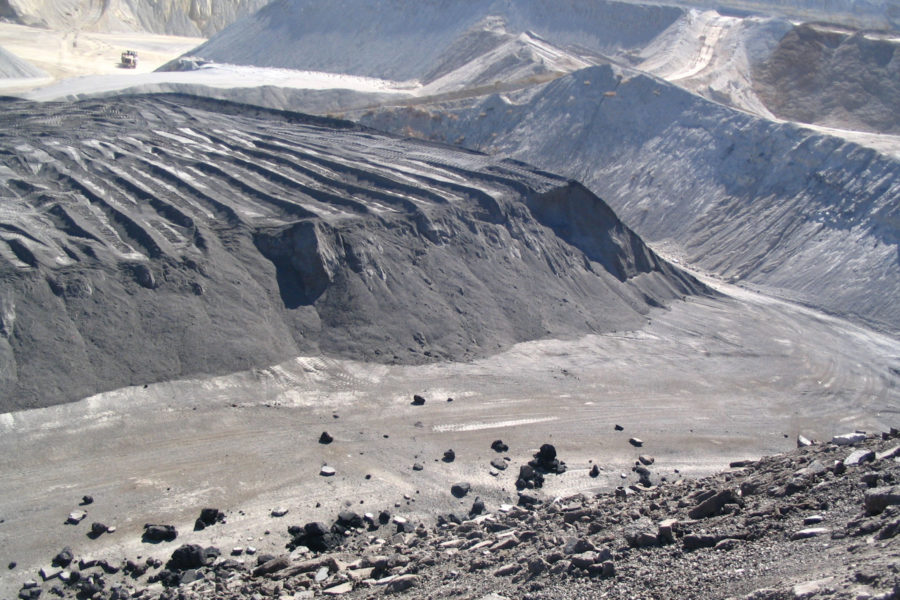
Photo courtesy of Geneva Rock
The importance of choosing local, sustainable, and ethically sourced materials can’t be overstated, especially when you’re looking to drastically reduce the environmental impact of your sustainable development projects. Natural materials like stone, FSC-certified timber, rammed earth, bamboo, cork, and the like are favored for their renewability, low-emission production processes, and/or ability to sequester carbon throughout their life cycles.
It’s also important to make sure the materials and products you’re using are also ethically sourced, as certain industries (such as stone mining) have been known to employ slave- and child-labor, whereas other materials (like timber) may not be managed or harvested in a sustainable manner.
Sourcing materials and products from local manufacturers can also aid in achieving sustainable development, as the transportation distance is shorter and therefore produces fewer carbon emissions.
The benefits of choosing locally sourced materials and products go beyond reducing transportation-related emissions. “Sourcing materials locally not only protects the environment, but it also improves the quality of life for the residents in our communities,” Nathan Schellenberg, vice president of specialty construction at Geneva Rock Products, previously wrote for gb&dPRO.
Incorporate Renewable Energy & Green Technology
Today most sustainable building development projects incorporate some manner of onsite renewable energy—typically solar—and green technology (e.g. low-emitting materials, energy-efficient appliances, etc.) as a means of reducing both carbon emissions and dependency on predatory energy providers.
Renewable energy and green technology can, however, be incorporated into almost every phase of the construction process, especially when it comes to sourcing, producing, and delivering materials. Some product manufacturers, for example, use renewable energy to partially power their facilities, while others—like Geneva Rock Products—have invested in low-carbon or electric/hybrid fleets of transportation vehicles.
In turn, this helps to reduce a building’s overall carbon footprint and total greenhouse gas emissions.
Use Real-Time Visualization Software
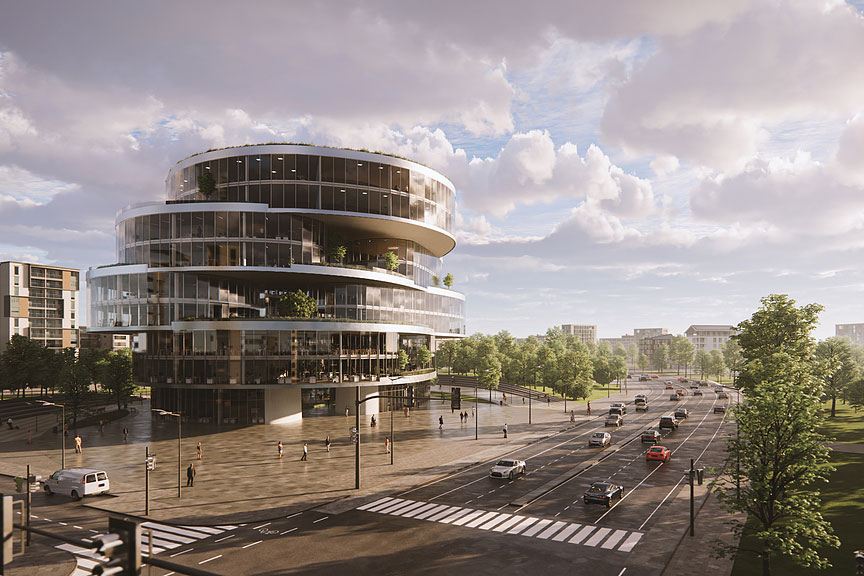
Image courtesy of Enscape
Similarly, real-time visualization software can help architects and their clients better visualize building projects before they are completed by providing them with tourable 3D models. Enscape, for example, is a real-time rendering plug-in capable of connecting directly with the modeling software a firm already uses and allows for on-demand renderings that change as the model is updated.
This can aid in the design of passive building solutions, effective natural ventilation pathways, intuitive floor-plan layouts, and more.
“Ideally, reviewing design renderings brings value to both the client and the design team by speeding up the decision-making process and creating realistic expectations for the finished project, bringing fewer changes during the construction phase,” Richard Bates, head of integrated practice at Enscape, previously wrote for gb&dPRO..
This highlights perhaps the most overlooked aspect of real-time visualization—the fact that it ultimately helps reduce onsite material and energy waste production.
Parametric Design & Building Performance Simulation Software
Similarly, sustainable development can also be achieved in part through the use of parametric design, or the method by which a set of rules, algorithms, and parameters define the design model itself. Users can input certain criteria—such as energy performance goals—to generate innovative, efficient design solutions.
“The design team can take these initial designs and combine them with additional project-specific data like building lot dimensions or the number of apartment units desired,” Bates writes. “The software will update the model’s geometry to adapt to the input parameters and generate a suitable design solution according to zoning and bylaws.”
When used in conjunction with building performance simulation (BPS) software—such as EnergyPlus or ESP-r—parametric design can help provide architects and engineers with incredibly detailed and highly optimized building designs.
Examples of Sustainable Development
Now that we have a better understanding of both the theoretical and practical nature of sustainable development, let’s take a look at a few real-world examples.
Schoonschip Amsterdam
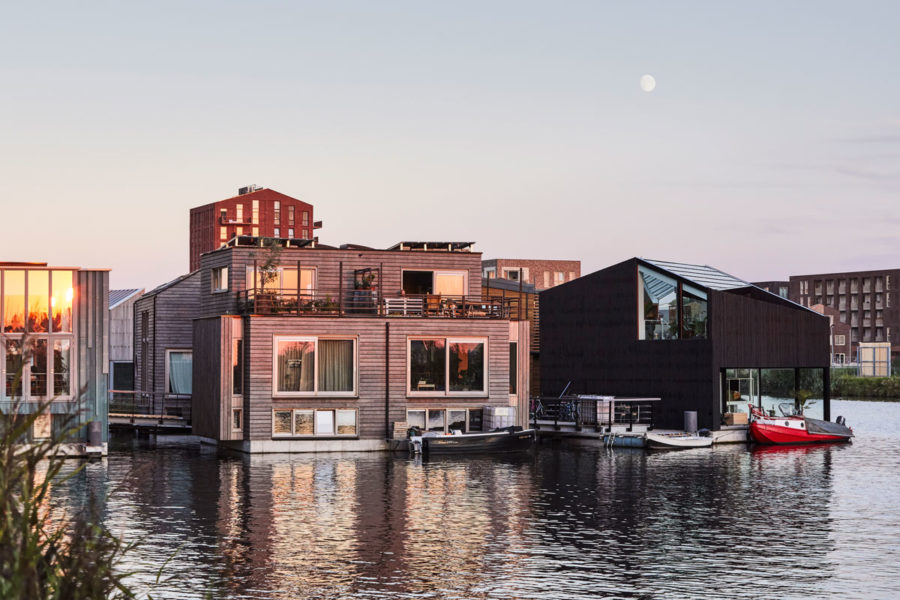
As an urban ecosystem embedded within the city, Schoonschip Amsterdam provides a new model for sustainable living. Photo by Alan Jensen
Developed by Space&Matter, Schoonschip Amsterdam is a floating village that comprises a total of 46 homes (there is room for growth) and incorporates elements of the circular economy to reduce its overall carbon footprint and environmental impact. Natural building materials like burlap, wood fiber insulation, and FSC-certified wood were favored over steel, concrete and other building materials with high-emission production processes.
An interconnected grid of 500 solar panels supplies each resident with electricity and uses innovative blockchain technology that allows households to exchange energy with one another, similar to how an energy cooperative might operate. Heat pumps and solar boilers are responsible for heating the village’s tap water, with many residents choosing to install low-flow water-efficient showers that help conserve water and energy by as much as 90% and 80%, respectively.
Schoonship Amsterdam also recycles all of its wastewater: greywater from household dishwashers, washing machines, sinks, and showers is treated on-site and reused, whereas the community’s blackwater is collected, fermented, and converted into usable energy at a local biorefinery.
Green roofs make up at least a third of each household’s roof, serving to mitigate stormwater runoff, reduce solar heat gain, and supply habitats for pollinators and birds. These green roofs, along with floating gardens, also allow each household to grow a portion of their own food, thereby bolstering food security and promoting healthy living.
“Schoonschip is transformed into thriving neighborhoods based on regenerating existing nature and ensuring social, ecological, and financial value remains with the community. This ensures a network of stewardship and care, which will keep the neighborhoods operating in a circular way for perpetuity,” says Sascha Glasl, cofounder of architectural firm Space&Matter.
UN City
Located in Copenhagen and designed by Danish architectural firm 3XN to meet LEED Platinum certification, UN City includes two campuses and houses 11 separate United Nations agencies. Predictably, its design was informed heavily by the UN Sustainable Development Goals, especially when it comes to clean, renewable energy—1,400 square meters of solar panels are installed on the roof, supplying approximately 30% of the building’s annual electricity.
A centralized atrium, smart building façade, and large windows allow ample daylight to enter the main structure, helping to improve occupants’ psychological well-being, foster increased productivity, and reduce emissions incurred from artificial lighting. UN City employs a white roof made from plant-based and recyclable materials to reflect a large portion of direct solar energy, reducing interior temperatures.
To conserve water UN City utilizes a rainwater catchment system to supply water to the building’s toilets, while outdoor green spaces help mitigate excess stormwater runoff and reduce the chances of urban flooding. A seawater cooling plant pumps naturally-cooled water throughout the building’s cooling system to help regulate interior temperatures at peak efficiency, further reducing energy loads.
Overall it’s estimated that UN City uses 55% less electricity than most similarly-sized office buildings.
The Night Ministry
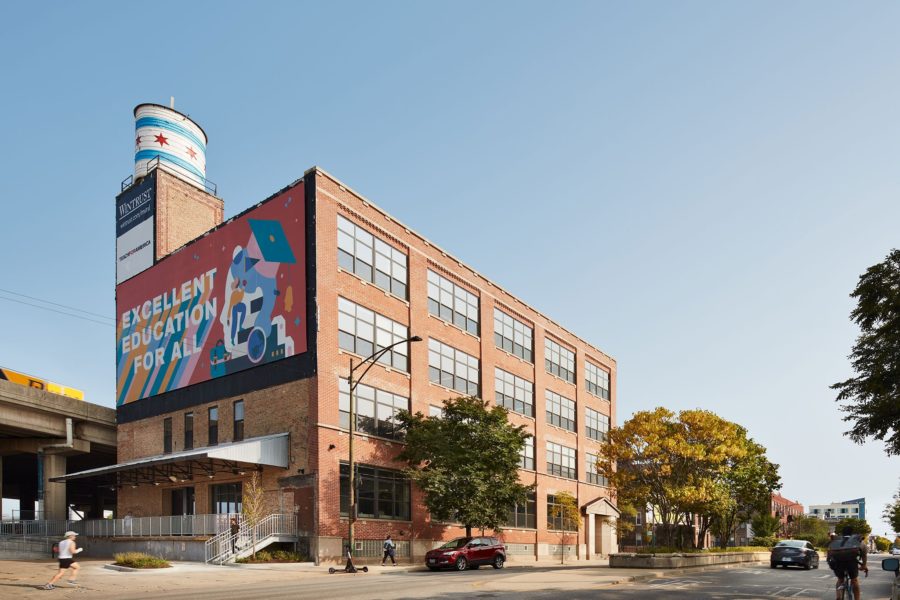
Wheeler Kearns Architects designed The Night Ministry in Chicago, renovating three floors of a former manufacturing facility in the Bucktown neighborhood. Photo by Kendall McCaugherty, Hall + Merrick Photographers
In Chicago’s Bucktown neighborhood, The Night Ministry headquarters is an inspiring example of how adaptive reuse can be used to achieve sustainable development by helping to foster social equity and build-up communities. Originally constructed in 1910 as a manufacturing plant, the structure that now houses The Night Ministry—a nonprofit centered around the provision of various social services—was redesigned in 2020 by Wheeler Kearns Architects. Today the building serves as both a community-outreach center and the organization’s new administrative office.
Comprising three floors, The Night Ministry’s ground floor is home to “The Crib,” an overnight shelter for young adults which includes a kitchen, restrooms, showers, sleeping quarters, and a multipurpose dining room. At the back of the building a repurposed loading dock functions as both an accessible and private entrance.
Meeting spaces and administrative offices are housed on the second and third floors, allowing The Night Ministry’s employees to continue providing healthcare services, warm meals, and housing support to those experiencing homelessness and poverty in the greater Chicago area.
“The Night Ministry’s new home revitalizes an underutilized building, known for the murals that adorn its exterior, into a welcoming and safe community asset,” Erica Ulin, the project lead at Wheeler Kearns, told gb&d in a previous article,
UN17 Village
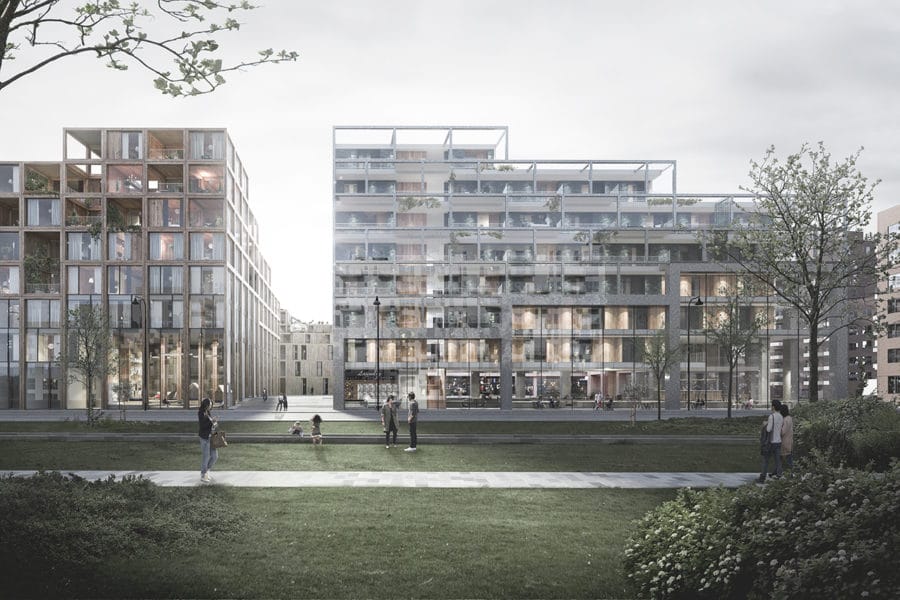
UN17 Village is set to be the first project in the world to address all 17 of the UN’s Sustainable Development Goals. Rendering courtesy of TMRW
One of the world’s most ambitious ongoing sustainable development project is Copenhagen’s UN17 Village, a mixed-use living community that aims to be the first building ever constructed to incorporate and address all of the UN’s 17 Sustainable Development Goals.
Designed by the Lendager Group in collaboration with Sweco Architects Denmark, UN17 Village is set to comprise five total buildings capable of housing at least 1,100 residents—other amenities include a health clinic, common areas, restaurants, and a sharing center where residents can swap or donate unused items. Once completed, the project will include the following sustainable features: rainwater catchment, treatment, and recycling; living walls and green roofs; biodiverse landscaping; energy- and water-saving appliances; solar panels; integration into the district-wide shared heating system, and more.
“Focusing on universal access to energy, increased energy efficiency, and the increased use of renewable energy is crucial to create resilience to environmental issues like climate change,” Anders Lendager, CEO and founder of the Lendager Group, previously told gb&d.

